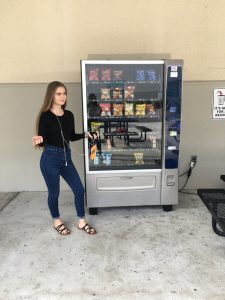The food choices at public school are not the best. We have vending machines, food carts and a whole cafeteria. But are they good for the students? Of course students are going to be saying that they want more snacks and better food, which most of the time is going to be unhealthy choices, but can this affect how students are going through their day?
Here are some facts about high school lunches, According to the USDA a typical school lunch far exceeds the recommended 500 milligrams of sodium; some districts, in fact, serve lunches with more than 1,000 milligrams. High amounts of sodium can disrupt a teenager’s body, especially during a day of school. Symptoms that may occur can be lethargy, irritability, changes in mental status, restlessness, seizures, and twitching or spasms.
The USDA also reports that less than 1/3 of schools stay below the recommended standard for fat content in their meals. This can cause weight gain, joint pain, drowsiness, skin problems, and a host of diseases from diabetes to cancer. This can be setting a high school student who has to eat school lunch, maybe due to issues at home, up to long term life and health problems. Unbalanced nutrition leads to decreased performance in school, obesity, diabetes, and a whole slew of other health problems.

Freshman Lauren Klisiewicz stands in front of one of many vending machines looking at the food choices. “Wow! These all look so unhealthy. How is this gonna effect my diet?” says Klisiewicz.